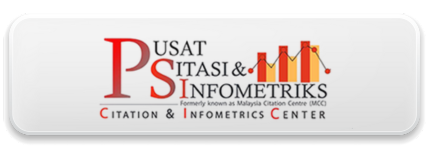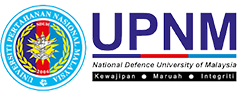Guideline for Authors
The journal publishes manuscripts written in English and Bahasa Malaysia. Manuscript submitted to the journal for publication should be an original contribution and must not have been previously published or is under consideration simultaneously by any other publication. The manuscript should be typed with double spacing, a single column in Cambria with font size 12 on A4 paper not exceeding 25 pages.
Please use this template: ZULFAQAR ZJDMSSH - Template
FORMAT AND STYLE
The title of a manuscript should be concise, descriptive and preferably not exceeding 15 words. The manuscript must include an abstract describing its main points within 150-250 words. The abstract must be in both English and Bahasa Malaysia for manuscripts submitted in Bahasa Malaysia.
Title and Authorship Information:
The title page should start with the type of manuscript (Research, Review Article, Short Communications, etc.). This should be concise, short, and specific and explain the nature of the work. The names of all authors (first name, middle initial, last name), including their departmental and institutional addresses, should also be included. The corresponding author's name, along with the E-mail, should be provided. An asterisk (*) should be added to the right of the corresponding author’s name. Their affiliation should be indicated by superscripts a, b, c,…… placed after each author’s name and before each affiliation.
Abstract:
The abstract must be a single unstructured paragraph of no more than 200 words describing the work's scope, hypothesis or rationale and the main findings. The abstract should be written in the past tense and presented without subheadings.
Keywords:
Immediately after the abstract, about 3-5 keywords should be provided, which will be used for indexing purposes. Commas and words should separate keywords from the title and avoid repeating them as keywords.
Introduction:
The introduction should be short and precise. It should describe the basic principles of research, earlier background work and the aim of the present study. The hypothesis to be tested should be specified. A summary of the results should be avoided. An extensive discussion of relevant literature should be included in the discussion section.
Materials and Methods:
Only new techniques and modifications to known methods need to be described in detail. Methods already published should be indicated by a reference. Include the supplier name and the manufacturer of any chemical or apparatus not commonly used. Appropriate statistical methods should indicate the probability level (P) at which differences were considered significant if data are presented in the text and state what they represent (e.g. means ± SEM). Indicate whether data were transformed before analysis. Specify any statistical computer programs used.
Results:
Results should be clear and concise, using tables or figures when feasible. The text should elaborate on the tabular data. It should be written in the past tense when describing findings in the authors' experiments. Sufficient data with some index of variation attached should be presented for proper interpretation of the experiment results.
Discussion:
The discussion should be able to interpret the results clearly and concisely about previous findings, whether in support, against or simply as added data, to provide the reader with a broad base on which to accept or reject the hypotheses tested. A combined Results and Discussion section is often appropriate.
Conclusions:
The significant or unique findings should be highlighted in this section. Its content should not substantially duplicate the abstract. The recommendation might be given.
Acknowledgement:
The Acknowledgments of people, grants, funding agencies, etc., should be brief.
References:
Manuscripts must conform to the references in UPNM Press, the American Psychological Association (APA) style. The references style adopted should be consistent throughout the manuscript. Below are examples of APA style referencing.
In-text Reference Citations
|
Single author |
Johnson (2004) has shown that ... This agrees with results obtained by several authors (Scholes, 1995; Alex, 1997; Nelson, 1998). |
|
Two authors |
Smith and Giggs (2000) reported that... This was later found incorrect (Khan & Rahman, 2002). |
|
Three or more authors |
Samuel et al. (1999) stated that... Similar results were reported recently (Smith et al., 2003). |
List of References
The list of references should include only those cited in the manuscript and arrange alphabetically by authors’ names. Citations such as manuscript in preparation or manuscript submitted are not permitted. The following format should be adhered to:
- Journal Papers
Article Author, A. A., & Article Author, B. B. (Year). Title of article. Title of Journal, volume number (issue number if necessary), inclusive page numbers.
- Book
- Authored work
Author, A. A., & Author, B. B. (Year). Title of work: Subtitle (edition.). (Volume(s).). Place of publication: Publisher.
- Edited work
Editor, A. A., & Editor, B. B. (Eds.). (Year). Title of work: Subtitle (edition.). (Volume(s).). Place of publication: Publisher.
- Book Chapter
Author of Part, A. A. (Year). Title of chapter or part. In A. A. Editor & B. B. Editor (Eds.), Title: Subtitle of the book (edition., inclusive page numbers). Place of publication: Publisher.
- Conference Proceedings
- In print proceedings
Author of Paper, A., & Author of Paper, B. (Year, Month date). Title of paper. In A. Editor, B. Editor, & C. Editor. Title of Published Proceedings. Paper presented at Title of Conference: Subtitle of Conference, Location (inclusive page numbers). Place of publication: Publisher.
- From the internet (DOI available)
Author of Paper, A., & Author of Paper, B. (Year, Month date). Title of paper. Paper presented at Title of Conference: Subtitle of Conference, Location. doi:10.XXX/XXXXX.XX
- From the internet (DOI unavailable)
Author of Paper, A., & Author of Paper, B. (Year, Month date). Title of paper. Paper presented at Title of Conference: Subtitle of Conference, Location. Place of publication: Publisher.
COPYRIGHT
The author must ensure that their submitted work does not infringe any existing copyright. Authors should obtain permission to reproduce or adapt copyrighted material and provide evidence of approval upon submitting the final version of a manuscript.
REVIEW PROCESS
The Editorial Board and at least one independent referee will review the manuscripts. Decisions regarding the publication of a manuscript will be based on the Board's recommendations. The manuscript will be evaluated based on its appropriateness for JDMSSH, contribution to the discipline, cogency of analysis, conceptual breadth, clarity of presentation and technical adequacy. Manuscripts submitted by the journal's Editorial Board members are subjected to the same review procedure.
PROOFS
One set of proofs will be sent to the author(s) to be checked for printer errors, and the author(s) must submit corrections to the Editorial Board.
DISCLAIMER
Opinions expressed in the journal are solely those of the authors and do not necessarily reflect the views of the editors or the publisher. Material published in the JDMSSH is copyrighted in its favour. As such, no part of this publication may be reproduced or transmitted in any form or by any means, electronic or mechanical, including photocopying or any information retrieval system, without permission in writing from the publisher







